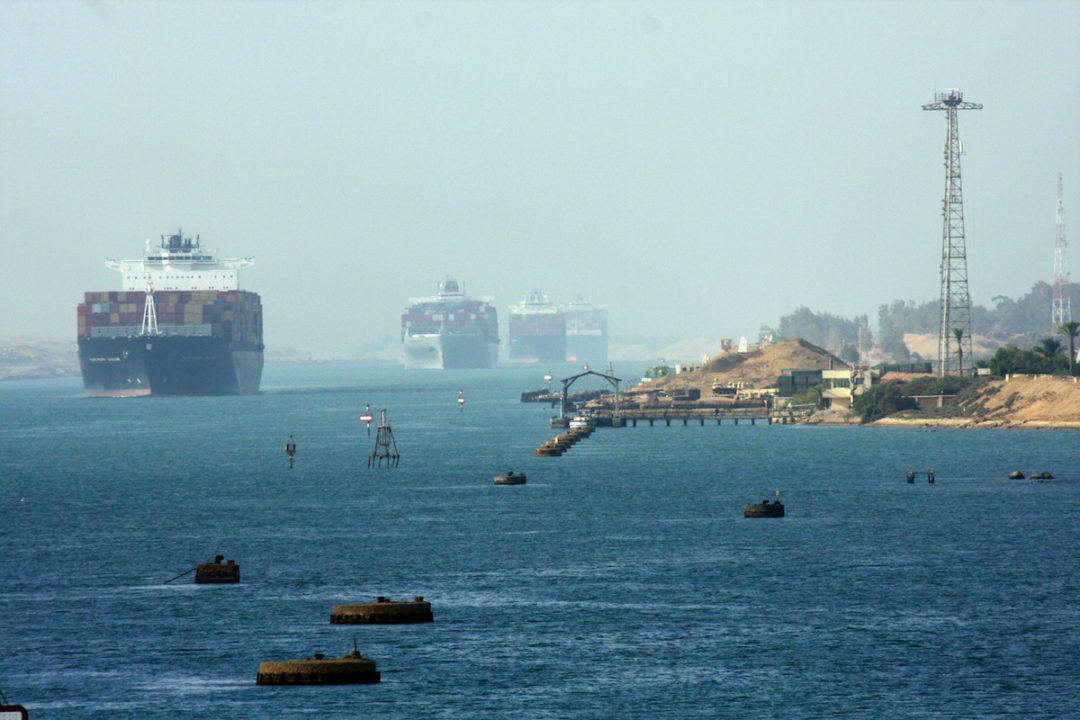
Brands, carriers, and third-party logistics providers are rapidly adapting their operations to address a chaotic shipping landscape and skyrocketing customer demands.
For years, 3PLs adroitly adapted to extraordinary market shifts beyond their control. Today, the flexibility and innovation that have been the cornerstone of their continued success remain critical.
The United Nations Committee on Trade and Development (UNCTAD) estimates that trade volume passing through the Suez Canal has decreased by 42% since November, 2023, and that the Panama Canal’s diminished water levels have resulted in a 36% reduction in total transits from one year ago.
While global trade volume constricts, expenses rise. Container shipping rates are jumping dramatically, with spot rates from Shanghai to Europe more than tripling, and those to the U.S. increasing by 162% since early December, 2023, according to the UNCTAD report.
Macroeconomic factors continue to negatively impact carriers’ ability to keep pace with the new speed of commerce. Meanwhile, the industry is also dealing with disruptions on the consumer delivery side. Labor union negotiations with UPS, FedEx, and DHL have affected costs and carrier relationships. The supply side is adjusting to significant events like the sudden closing of less-than-truckload (LTL) freight giant Yellow and digital freight brokerage Convoy, along with the steep revenue decline at J.B. Hunt Transport Services.
Brands and 3PLs looking to optimize operations — delivering on time and within budget — need to respond to the following trends in shipping.
Diversification of vendors and suppliers. With continued supply-side disruptions, brands should consider how to mitigate risk associated with overseas suppliers. Last year, Mexico overtook China as the number-one exporter to the U.S. for the first time in 20 years. This highlights the potential for brands to nearshore or diversify manufacturers and suppliers to areas closer to the U.S., allowing brands to drive a lower overall landed cost of goods.
Increased flexibility in pricing and rate negotiations. As the shipping industry faces fluctuations in demand, labor disruptions, and increased competition, carriers have become more responsive to rate negotiations. Savvy 3PL warehouses and retailers can embrace this opportunity to secure more favorable delivery contracts, leveraging their high shipping volume and long-term relationships with carriers. Businesses should reassess carrier partnerships and shipping rates to uncover potential savings and optimize service levels, and cultivate strong relationships with a diverse array of carriers.
Brands or 3PLs needing help in securing reduced rates should consider partnering with shipping aggregators or label providers to access discounted shipping options.
Diversification of carrier options and adoption of rate shopping technologies. With the emergence of new carriers, companies are looking to include more specialized and regional providers. More businesses are rate shopping, shifting away from reliance on preferred carrier partners to find the most affordable shipping options.
A multicarrier shipping strategy is another option to mitigate risks and obtain competitive rates. A one-size-fits-all approach limits the ability to minimize shipping costs and maintain high service quality. By exploring a variety of carriers, 3PLs can offer tailored solutions to customers. In addition, brands working with a variety of carriers can reduce their total cost of delivery.
The need to adapt to changing consumer delivery preferences and adopt cost-control measures. In response to the Amazon Effect — the pressure to offer free and fast delivery to consumers — companies are rethinking their delivery strategies. This includes revamping free shipping policies to add fees for faster service, raising minimum purchase requirements, adopting flat-rate shipping models, and using multi-point distribution frameworks to increase delivery speeds.
Brands and 3PLs should consider strategies for geographic diversification of product distribution to enhance delivery speed and reduce costs. A single-point distribution approach often can’t support businesses needing to provide free and fast delivery. Multi-point distribution frameworks can help them meet those growing expectations. The concept may take various shapes, such as a new 4PL network created by a partnership of multiple 3PL warehouses, individual 3PLs adding nodes to their operation, or existing 4PL providers expanding their network.
The advent of artificial intelligence and other innovative technologies. AI has become a critical component for companies turning to technology for its transformative potential. Areas in which they’re currently deploying AI include improving demand forecasting and optimizing shipping programs.
With the help of AI, companies can adopt automated rate shopping. They can use advanced shipping platforms with analytics tools to optimize routing decisions, enable real-time tracking, and provide insights to preempt potential disruptions. Both traditional and generative AI promise that innovation in this area will continue to be rapid and significant.
Today’s supply chain challenges require a strategic reevaluation within the logistics sector, focusing on flexibility, innovation and the cultivation of strong partnerships. By implementing these best practices, companies can navigate the complexities of the modern shipping landscape.
Rachel Trindade is chief marketing officer of Extensiv.







